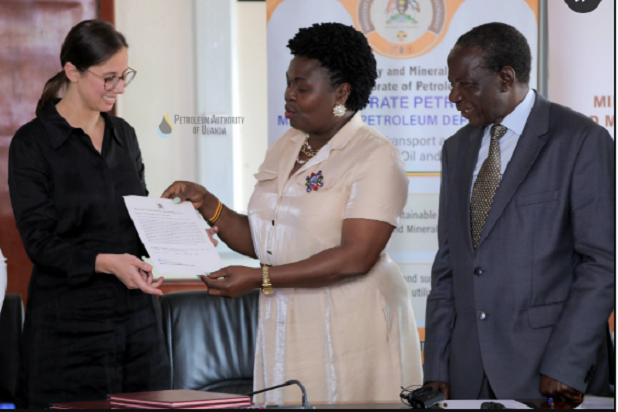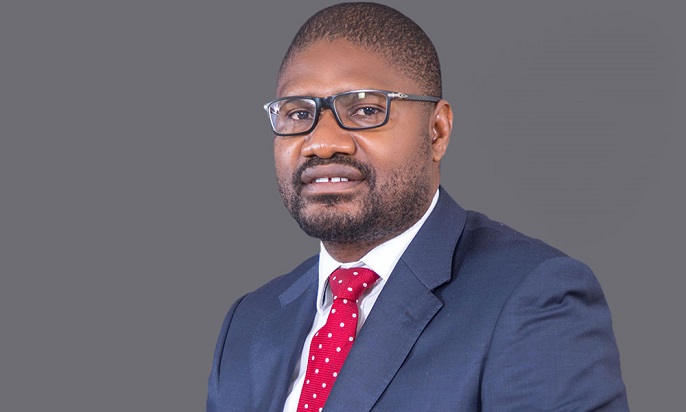The joint venture partners in Uganda’s Oil and Gas sector are set to make the Final Investment Decision (FID) today afternoon.
The FID by TotalEnergies, CNOOC and Uganda National Oil Company (UNOC) is expected to see money invested towards the development of the Kingfisher and Tilenga projects in the Albertine Graben and the construction of the East African Crude Oil Pipeline (EACOP) from Hoima to the Chongoleani peninsula near Tanga port in Tanzania.
The 1,440-kilometre pipeline, when complete, will transport crude oil from Hoima Western Uganda to the Tanzanian Indian Ocean Port of Tanga. The Completion of the pipeline, planned in 36 months’ time, will also give way for the commercial production of oil, which has been delayed 15 years since commercially viable deposits were first discovered.
The announcement of an FID ends a wave of negotiations between the governments of Uganda and Tanzania as well as the oil companies and the two governments. Late last year, Parliament passed the EACOP (Special Provisions) Act, The Public Finance Management (Amendment) Bill, and the Income Tax (Amendment) Bill, ending the legislative process necessary for the FIDs.
“This is the point in an energy project in which the company or companies owning and/or operating the project approve, or sanction, the project’s future development,” says the Petroleum Authority Uganda.
Uganda National Oil Company is representing the interests of the government of Uganda. Tanzania also has a stake in the pipeline company through the Tanzania Petroleum Development Corporation.
In total, the oil projects investments are expected to total 10 to 15 billion US Dollars, with at least 4.2 billion of the expenses going to Ugandans and Ugandan companies, according to projections in the contact frameworks.
“This milestone unlocks a 15 million US Dollar investment into the economy for the construction of Uganda’s infrastructure required for the development, production and commercialization of Uganda’s oil and gas resources,” said Ruth Nankabirwa, the Minister for Energy and Mineral Development. She says that about 3 billion dollars in investments are expected this year and between 15 and 20 billion in the next 3 to 5-years
“The planned 15-20 billion-dollar (52-70 trillion Uganda shillings) investment after the FID will facilitate Uganda’s GDP growth by 22 per cent and also unlock over 60,000 jobs where over 57 per cent will be given to Ugandans, attracting 4.8 billion dollars (About 16.8 trillion Uganda shillings).
The projects will include the building of mini (field) processing facilities in the Tilenga and Kingfisher areas, and the Central Processing Facility at Kabaale Industrial Park in Hoima, from where the crude will be transported by the pipeline to Tanga for export. There are also plans to construct a refinery in Hoima for the local and regional market for finished products, as well as an oil terminal in Wakiso near Kampala.
The journey
The presence of oil deposits in Uganda was first confirmed in the 1920s. According to historical text on Uganda, the indigenous people of Kibiro, in today’s Hoima District, and surrounding areas in the Lake Albert basin, already knew the existence of oil and used the crude from seepage for various needs including treating wounds.
In the 1920s, a colonial government geologist, E. J Wayland made the first attempt at the evaluation of the country’s hydrocarbon potential, documenting numerous hydrocarbon occurrences in the Albertine Graben.
Some exploration continued but it was disrupted by the Second World War in the 1940s.
“Serious exploration work commenced again in early 1980s with the acquisition of aeromagnetic data across the entire Graben and the subsequent follow-up ground geophysical and geological work in the late 1980s and 1990s,” says the Directorate of Petroleum of Uganda.
Seismic data was first acquired in the Graben during 1998 and several surveys have been undertaken to date. The first shallow stratigraphic wells were drilled by the African – European Investment Company, while the first deep well “Waki B-1” was drilled in 1938 in Butiaba, Buliisa. At least 20 shallow wells were also drilled in Kibiro and Kibuku areas for geological correlation.
In the 1940s and 50s, geological surveys were carried out and established the presence of sedimentary sequences of clays and silts. Unfortunately, after the second world war, the colonial government changed its priorities and zoned East Africa for agriculture and West Africa for oil exploration.
After independence, the successive governments did not take the sector on until 1980 when President Godfrey Lukongwa Binaisa vowed to develop the resource but was ousted soon. In 1983, the government acquired 9,578 line km of aeromagnetic data that identified three deposit centres along the entire length of the Graben, setting in the modern era of the sector.
In 1985, the Petroleum Exploration Project was established to spearhead exploration promotion and acquisition of geological and geophysical data over the Graben. The first Petroleum (Exploration and Production) Act is enacted. In 1986, new president Yoweri Museveni issued a policy direction for the sector on capacity building, data acquisition and promotion, and monitoring of compliance of license companies.
In 1990, a Cooperation Agreement between Uganda and the Democratic Republic of Congo (DRC) for Joint Exploration and Development of Common fields was signed. The First Production Sharing Agreement (PSA) between Petrofina Exploration Uganda and Government was signed in 1992, over the entire Albertine Graben.
The government’s petroleum unit in the Geological Survey and Mines Department of the Ministry of Energy was transformed into the Petroleum Exploration and Production Department (PEPD), and commenced follow up of ground geological and geophysical surveys in areas identified by the aeromagnetic data.
Petrofina’s license is not renewed. 1997 saw the licensing of Exploration Area 3 (Semliki Basin), to Heritage Oil and Gas Limited And in 2001 Hardman Resources and Energy Africa, which later became Tullow Oil was licensed for Exploration Area 2, which is the northern part of the Lake Albert Basin.
In 2007, Dominion Petroleum was licensed to Exploration Area 4B (Lakes Edward and George Basin) and in 2008.
Cabinet approved the National Oil and Gas Policy for Uganda. Between then and now, 6.5 billion barrels have been discovered about 1.7 billion of these, recoverable. In 2020, Tullow agreed to sell its entire interest to Total for 575m USD in cash and post first oil contingent payments.
-URN






The country awaits oil.